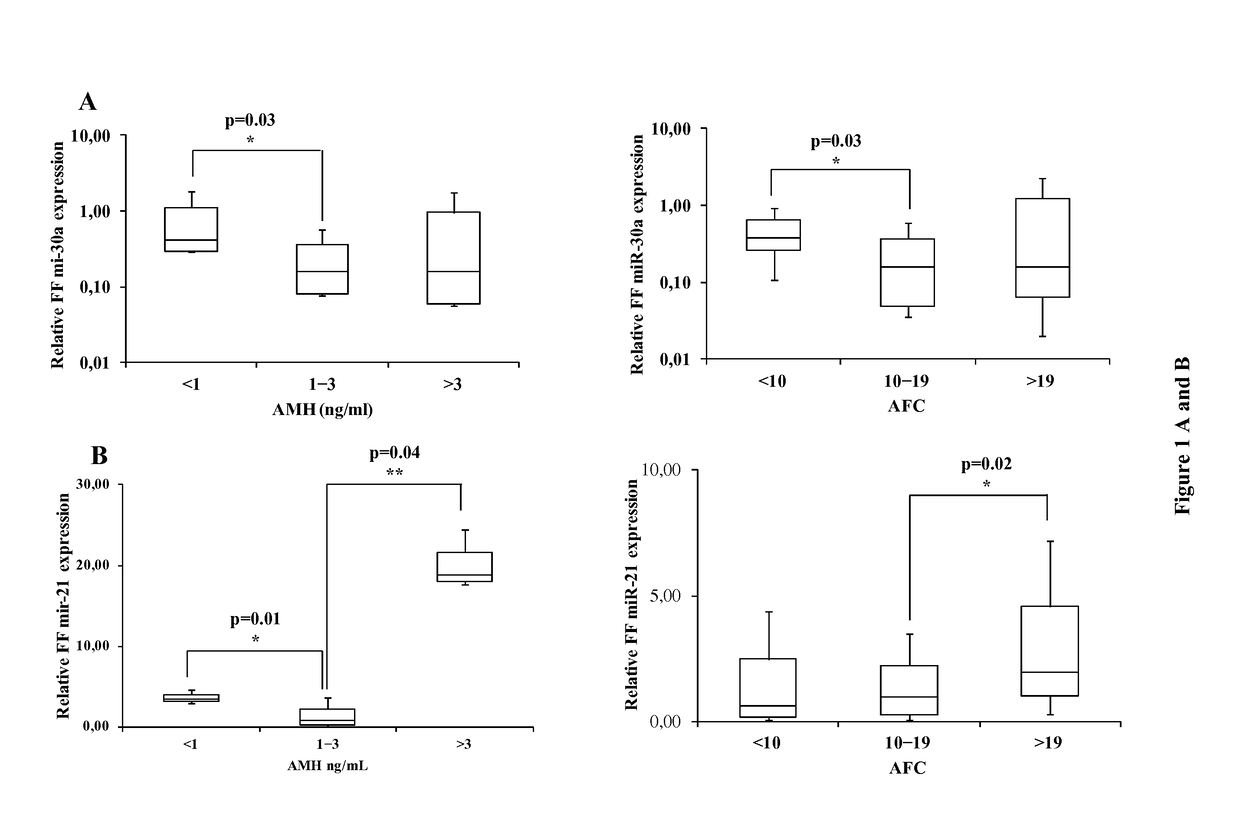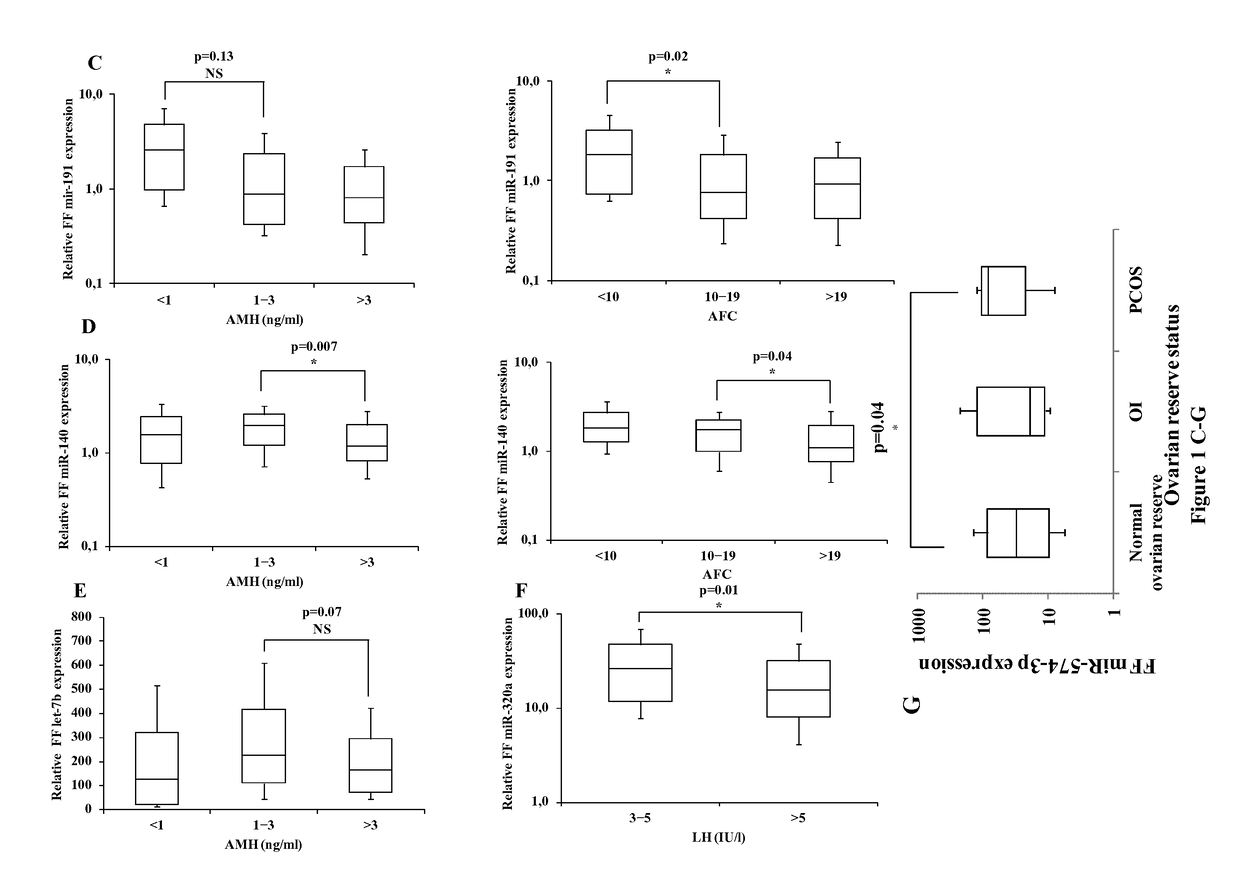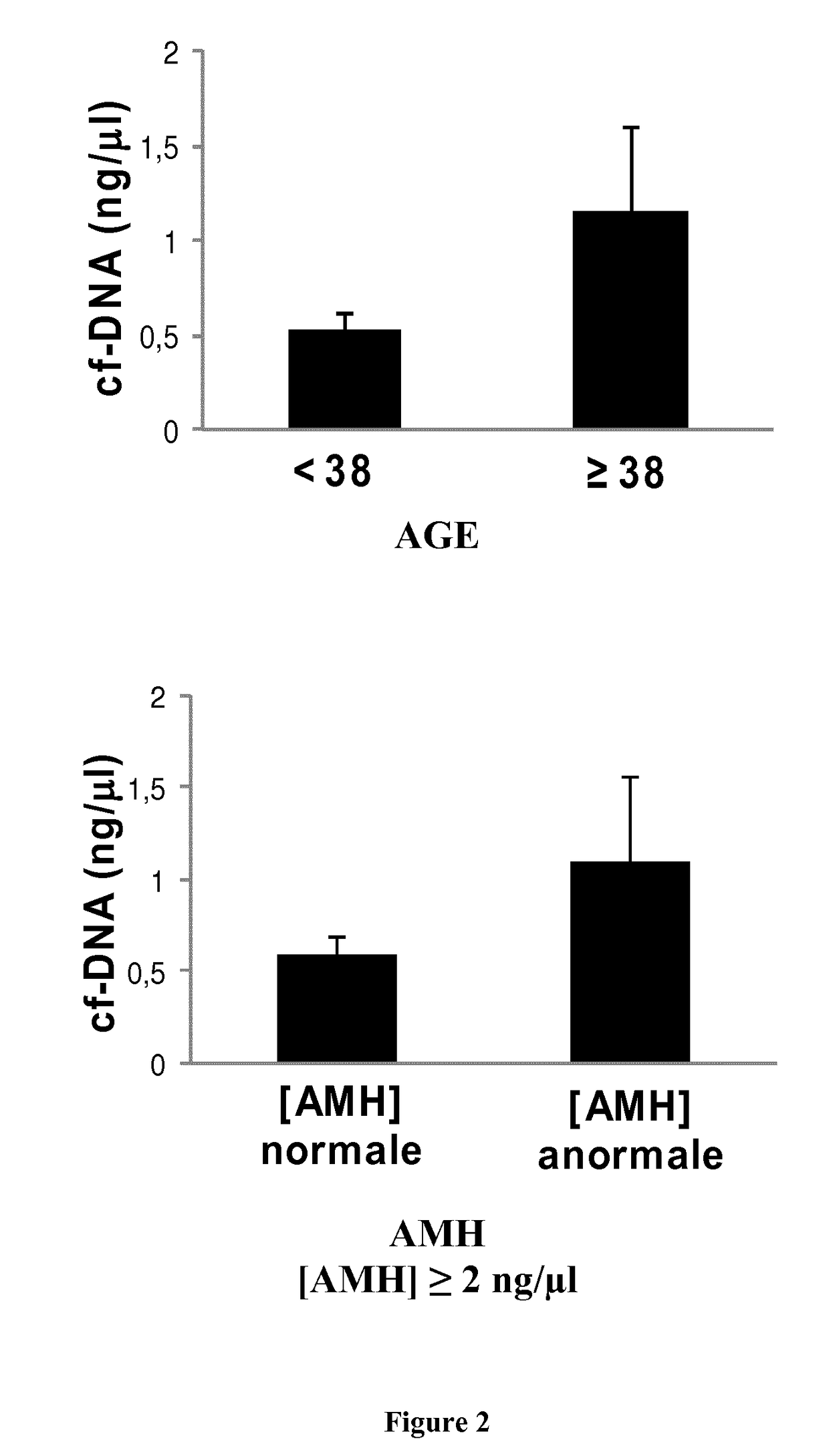Methods employing circulating DNA and mirna as biomarkers for female infertility
- Summary
- Abstract
- Description
- Claims
- Application Information
AI Technical Summary
Benefits of technology
Problems solved by technology
Method used
Image
Examples
example 1
[0066]The present invention relates to a non-invasive method for predicting the ovarian reserve / functions of a woman, IVF outcomes, and the use of these new biomarkers as therapeutic targets in order to improve ART success.
[0067]This invention comprises the steps consisting of:
[0068]i) Providing a sample of serum or plasma,
[0069]ii) extracting the cell-free nucleic acids (cell-free DNA and microRNAs) from the sample,
[0070]iii) determining the level of the cell-free nucleic acids (cell-free DNA and microRNAs) in the nucleic acid extractions
[0071]iiii) Treating women with pre-miRs or anti-miRs molecules to re-establish the right level of microRNAs in the blood.
[0072]Several studies have shown that miRNAs are involved in intercellular signaling (Valadi et al., 2007). Indeed, miRNAs can be secreted in the extracellular medium by donor cells to act on other cells. These circulating miRNAs are protected from degradation in small vesicles called exosomes and can be found in biological flui...
example 2
[0111]Material & Methods
[0112]Patients
[0113]This prospective study recruited 100 women enrolled in conventional IVF (n=31) or ICSI (n=69) program at the ART-PGD Department of the University Hospital of Montpellier. The patients' characteristics are detailed in Table 1. The women's age was 34.3±4.5 years (mean±SD; range: 23 to 43 years) and the body index mass (BMI) was 23.3±4.2 kg / m2 (mean±SD; range: 17 and 39 kg / m2). The infertility length was 3.5±1.7 years (mean±SD). For 61% of the couples this was the first IVF or ICSI cycle and the remaining 39% of the couples had undergone at least one cycle (mean cycle number±SD: 2.1±1.3). In 11% of the couples, no specific cause of infertility was detected, while in the other couples, male (37%), female (36%) or mixed (16%) factors were identified. Based on the AMH level and AFC at day 3 of menstrual cycle, 94 of the 100 patients had a normal ovarian reserve and 6 had low functional ovarian reserve (LFOR). Basal FSH, LH and E2 levels were qua...
example 3
[0148]Materials and Methods
[0149]Patients
[0150]This prospective study included 131 women who underwent conventional IVF (n=32) or ICSI (n=99) at the ART-PGD Department of the University Hospital of Montpellier, France. Their mean age was 34.7±4.5 years (mean±SD; range: 19 to 43 years) and the body mass index (BMI) was 23.4±4.5 kg / m2 (mean±SD; range: 17 and 37.5 kg / m2) (Table 7). The infertility length was 3.6±1.5 years (mean±SD) and infertility was primary in 78 couples and secondary in the other 53. Male, female and mixed factors were detected in 31.3%, 37.4% and 25.2% of cases, respectively, while infertility was unexplained in 6.1% of couples. This was the first IVF or ICSI attempt for 38.9% of them, while 61.1% had already undergone at least one cycle (mean number of cycles+SD: 2.1±1.3). Among the 131 women, 91 had a normal ovarian reserve and 10 had LFOR, based on the serum AMH level and AFC, evaluated at day 3 of the menstrual cycle. The other 30 women had PCOS, according to t...
PUM
 Login to View More
Login to View More Abstract
Description
Claims
Application Information
 Login to View More
Login to View More - R&D Engineer
- R&D Manager
- IP Professional
- Industry Leading Data Capabilities
- Powerful AI technology
- Patent DNA Extraction
Browse by: Latest US Patents, China's latest patents, Technical Efficacy Thesaurus, Application Domain, Technology Topic, Popular Technical Reports.
© 2024 PatSnap. All rights reserved.Legal|Privacy policy|Modern Slavery Act Transparency Statement|Sitemap|About US| Contact US: help@patsnap.com










